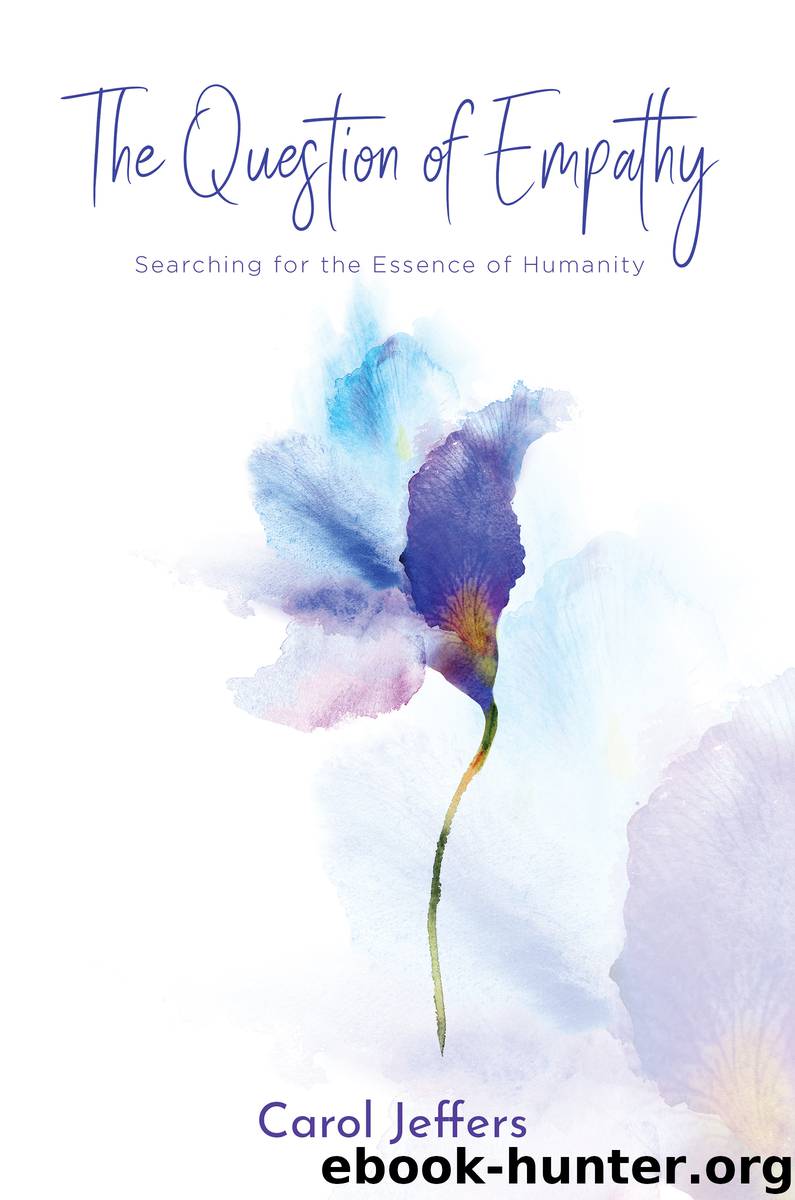The Question of Empathy by Carol Jeffers

Author:Carol Jeffers
Language: eng
Format: epub
ISBN: 978-1-63393-669-0
Publisher: Koehler Books
Published: 2015-11-23T16:00:00+00:00
But what if empathy were to be located? What if it is empathy that roots us in the borderland or dizzies us under the disco ball? Could it be Empathy who tells stories meant to blur the lines between what is real and what is not? Or is it we who omit such truths? We the sinners who tell ourselves stories in order to dance—to dream? Are we the Every man, Every woman telling ourselves stories in order to feel and to feel better? Or find our destinies? Make sense of a world spinning out of control? Must we be the ones to spin the yarns that one day can retake control?
Damasio says we are wired to tell ourselves stories. “The brain is a born storyteller,” he says, “busy constructing the narrative of our own autobiography.” What is an autobiography but a tangle of short stories knotted together? We have no time to sort them, only to tell them—and tell them we must. How else are we to make sense of what gnaws at us from within the internal world or shouts at us from the external? Ours is the storytelling species, uniquely aware of what is at stake. Stories must come through for us, must reconcile the differences between inner and outer worlds and smooth out their competing demands.
What’s more, the stories we tell ourselves must do the heavy lifting, give us a way to handle the brain’s consciousness of time—what we remember of a lived past and what we envision in an anticipated future. Our stories are resilient indeed, and as Damasio sees them, robust enough to resolve the “conflict” between the two states that have us looking backward and forward at the same time. Better still, our stories write the permission slips that allow us to start over again after yet another of our “setbacks,” as Damasio calls them. When the memories are too paralyzing, the future too forbidding, we need only reinvent ourselves and tell a different story.
Perhaps we will applaud Kathryn’s storytelling efforts, her brain’s response to the desperate questions of making sense, starting over, and retaking control. “My life is in chaos,” said the returning student—an older woman in a class of twentysomethings. Yet, the story she told herself was clear to all. Everything made sense now that she identified with the wild, windswept branches of The Mulberry Tree, Van Gogh’s small but intense canvas, painted at the asylum in Saint-Rémy during the autumn of 1889. Was it the yellow leaves of a lonely tree flailing against an indigo sky that spurred Kathryn to find the words? Or had Van Gogh’s own turbulence explained the terrifying chapter now unfolding in her story?
Either way, Kathryn told herself that she was not alone, not “the only one going crazy”—the reconciliation she would make and the comfort she could take after the sudden death of one son, the incarceration of another, and the long-term reality of caring for a daughter with Down syndrome, alone.
The need to make
Download
This site does not store any files on its server. We only index and link to content provided by other sites. Please contact the content providers to delete copyright contents if any and email us, we'll remove relevant links or contents immediately.
Goodbye, Things by Fumio Sasaki(8287)
The Road Less Traveled by M. Scott Peck(7277)
Daring Greatly by Brene Brown(6222)
Big Magic: Creative Living Beyond Fear by Elizabeth Gilbert(5351)
Grit by Angela Duckworth(5295)
Discipline Equals Freedom by Jocko Willink(5156)
Ego Is the Enemy by Ryan Holiday(4956)
The Wisdom of Sundays by Oprah Winfrey(4949)
The Laws of Human Nature by Robert Greene(4770)
You Are a Badass at Making Money by Jen Sincero(4657)
Influence: The Psychology of Persuasion by Robert B. Cialdini(4599)
The Miracle Morning by Hal Elrod(4422)
Rising Strong by Brene Brown(4190)
Reflections Of A Man by Mr. Amari Soul(4129)
A Simplified Life by Emily Ley(3965)
The Power of Positive Thinking by Norman Vincent Peale(3857)
Seriously... I'm Kidding by Ellen DeGeneres(3412)
How to Win Friends and Influence People in the Digital Age by Dale Carnegie & Associates(3361)
Delivering Happiness by Tony Hsieh(3280)
